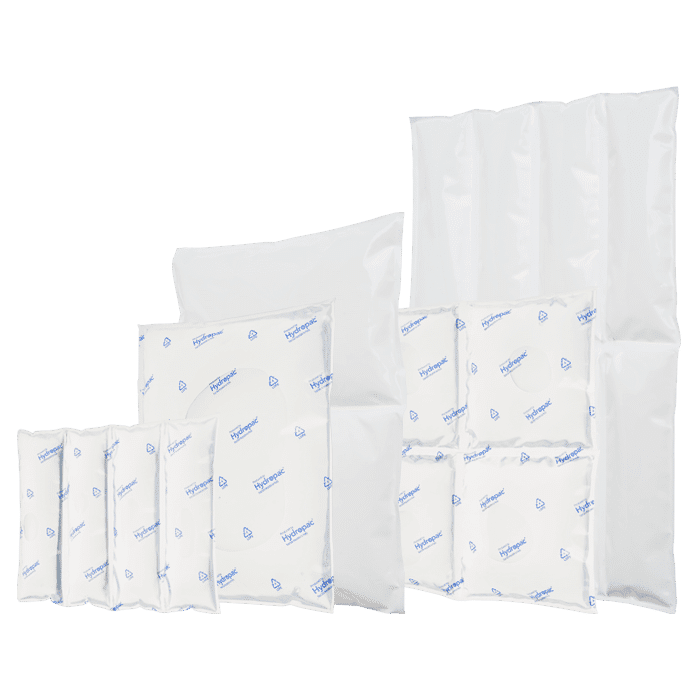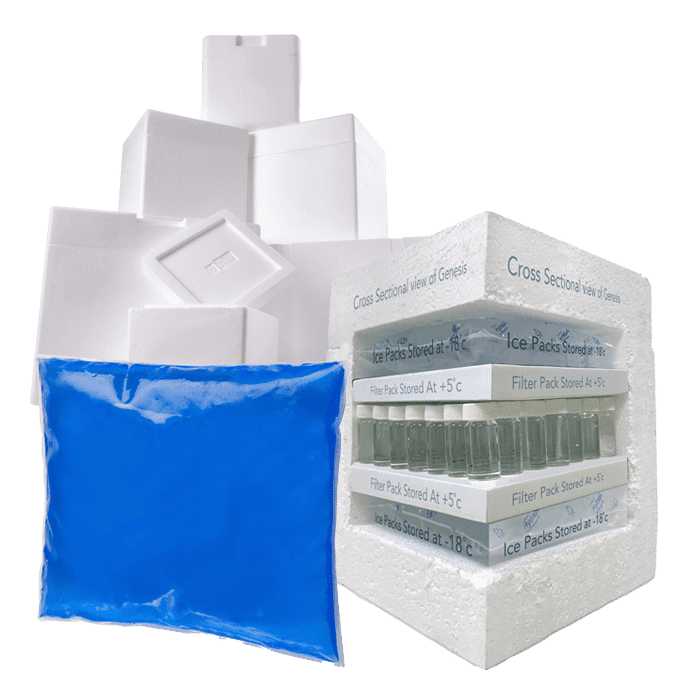Why is dry ice considered a must for food shipping?
What is dry ice?
Dry ice is a solid form of carbon dioxide and is primarily used as a cooling agent. Dry ice is used to keep medical supplies, food and other items at a stabilised temperature during transport. It can also be used to keep goods frozen when mechanical cooling is not available.
If not handled correctly, dry ice can be hazardous because the extreme cold can burn skin and the gas can be explosive if not vented properly. The dry ice comes with a range of benefits but only when used correctly under the right circumstances.
Due to the exceptionally cold temperatures of -78.5 degrees Celsius ( -109.3 degrees Fahrenheit), dry ice is best used primarily for products that absolutely have to be kept frozen or cold like frozen food. Even with food, dry ice may be too much for products that do not have to stay completely frozen so combinations of dry ice and ice packs can even be combined.
Custom chilled solutions for you
Hydropac offers every customer a customized solution for chilled and conditioned shipping. For example, we help a customer with limited freezing capacity to deliver gel packs frozen and ready to use, and we can manufacture almost all shapes and sizes of cooling elements. As a customer, you come first: we are here to help you.
Benefits of dry ice
- Does not alter the taste of food
- Does not leave behind any residue
- Can be combined with other cooling agents such as gel ice packs
- Easy to obtain from dry ice suppliers
- Generally inexpensive and more cost-effective in bigger quantities.
- Is classed as hazardous goods and many carriers won’t carry it…
How to ship with dry ice
When handling dry ice, precautions have to be taken to remain safe. Goggles have to be worn to protect the eyes, bibs to protect the body and clothing and special gloves have to be worn to minimise and burning. Training must be received by anybody who has to come into contact with dry ice in the supply chain.
Packing with dry ice requires specific care because it can become dangerous. The dry ice has to be ventilated efficiently because as the carbon dioxide sublimates it starts to increase in pressure which could lead to an explosion and asphyxiation
Shipping with dry ice requires many particular layers to make sure it is shipped correctly. Food shipments should be packaged between dry ice blocks, inside of an insulated container. The insulation should be made from a type of polystyrene foam because it is rigid and holds its shape and can physically protect the contents during shipping. The insulated box with the dry ice inside should then be placed in an outer corrugated cardboard box. All of these layers should not be airtight because it can be dangerous. (These stages are guidelines, not instructions)
On the exterior of the shipment packaging with dry ice inside, there should be a note or a sticker stating ‘Dry Ice’ or ‘Carbon Dioxide, Solid’ with a note of the weight of the dry ice.
Hydropac has a safer alternative to dry ice currently ‘HydroFreeze’ which holds temperatures between -5 to -10˚c, but we are also developing a product currently which will hold firm at -20˚c for 350% longer than the current HydroFreeze formula, with more to come on that soon..
Sustainability Hydropac and CSR
Sustainability isn’t just a trend for us – it’s a promise. As we innovate, create, and lead, we keep our planet’s well-being at the forefront. With Hydropac, you’re not just preserving the quality of your cargo; you’re contributing to a healthier world.
Experience the power of sustainable temperature assurance with Hydropac – where excellence and environmental responsibility coexist for a brighter future.







